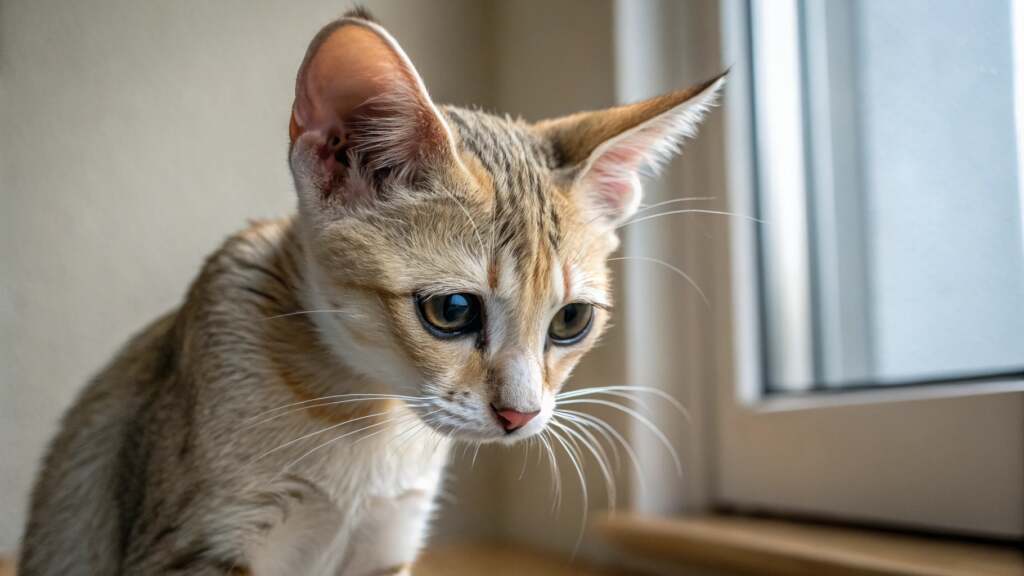Cats might seem independent and low-maintenance, but beneath that confident exterior, they are vulnerable to many health issues. Some are minor and easily treatable; others can become serious if left unchecked.
As a responsible cat owner, knowing the most common cat health problems can help you spot trouble early and keep your feline friend healthy and happy.
Let’s dive into the health challenges every cat owner should be aware of — and what you can do to protect your beloved pet.
1. Dental Disease
Dental problems are among the most common health issues in cats.
Plaque and tartar buildup can lead to gingivitis, painful infections, and even tooth loss. If untreated, bacteria can enter the bloodstream and damage the heart, liver, or kidneys.
👉 Signs to Watch For:
- Bad breath
- Drooling
- Difficulty eating
- Swollen or bleeding gums
👉 Prevention:
Brush your cat’s teeth regularly, offer dental treats, and schedule professional cleanings when needed.
2. Obesity
Obesity is a growing epidemic among cats.
Extra weight stresses the body, increasing the risk of diabetes, arthritis, heart disease, and more.
👉 Signs to Watch For:
- Inability to groom properly
- Difficulty jumping
- Shortness of breath
- Lack of visible waist
👉 Prevention:
Feed a balanced diet, measure portions carefully, limit treats, and encourage daily play.
3. Feline Lower Urinary Tract Disease (FLUTD)
FLUTD affects the bladder and urethra, causing pain and difficulty urinating.
It’s especially dangerous because in male cats, blockages can be fatal within hours.
👉 Signs to Watch For:
- Straining to urinate
- Frequent trips to the litter box with little success
- Blood in the urine
- Crying in pain while urinating
👉 Prevention:
Provide plenty of fresh water, feed high-quality wet food, and reduce stress at home.
4. Kidney Disease
Chronic kidney disease (CKD) is common in older cats.
The kidneys slowly lose function over time, leading to serious complications if not managed.
👉 Signs to Watch For:
- Increased thirst and urination
- Weight loss
- Vomiting
- Poor coat condition
👉 Prevention:
There’s no guaranteed prevention, but regular vet check-ups can catch early signs and slow disease progression with special diets and medication.
5. Hyperthyroidism
Hyperthyroidism is a hormonal disorder usually seen in older cats.
It causes the thyroid gland to produce too much hormone, speeding up metabolism dangerously.
👉 Signs to Watch For:
- Weight loss despite eating more
- Hyperactivity
- Vomiting
- Rapid heart rate
👉 Prevention:
There’s no sure way to prevent it, but regular bloodwork can catch it early when it’s easier to treat.
6. Parasites (Fleas, Ticks, Worms)
Even indoor cats can suffer from parasites.
Fleas, ticks, and intestinal worms can lead to discomfort, anemia, or serious diseases.
👉 Signs to Watch For:
- Excessive scratching or licking
- Visible fleas or flea dirt
- Scooting or visible worms around the anus
- Vomiting or diarrhea
👉 Prevention:
Use vet-recommended parasite prevention year-round and keep your home clean.
7. Respiratory Infections
Cats can catch colds too!
Upper respiratory infections (URIs) are especially common in kittens and shelter cats.
👉 Signs to Watch For:
- Sneezing
- Runny nose or eyes
- Coughing
- Loss of appetite
👉 Prevention:
Vaccinate your cat, reduce exposure to sick animals, and maintain a stress-free environment.
8. Diabetes
Diabetes occurs when your cat’s body can’t properly use insulin, leading to dangerously high blood sugar levels.
👉 Signs to Watch For:
- Increased thirst and urination
- Weight loss
- Lethargy
- Sweet-smelling breath
👉 Prevention:
Maintain a healthy weight for your cat and monitor for early symptoms, especially in overweight cats.
9. Cancer
Sadly, cancer is a reality for some cats, especially as they age.
It can affect almost any part of the body, from skin to internal organs.
👉 Signs to Watch For:
- Unexplained lumps or bumps
- Weight loss
- Difficulty eating or breathing
- Lethargy
👉 Prevention:
While some cancers can’t be prevented, early detection gives your cat a better chance at successful treatment.
10. Arthritis
Many older cats suffer silently from arthritis.
Joint pain can drastically lower their quality of life if left untreated.
👉 Signs to Watch For:
- Difficulty jumping or climbing
- Stiffness after resting
- Limping
- Reduced grooming
👉 Prevention:
Keep your cat at a healthy weight, provide easy access to favorite spots, and talk to your vet about supplements or medications.
Final Thoughts
Understanding the most common cat health problems arms you with the knowledge you need to act quickly if something feels wrong.
Regular vet check-ups, a balanced diet, and a loving environment can go a long way in protecting your furry companion.
Your cat depends on you for more than cuddles and playtime — they depend on you for life itself.
Stay informed, stay observant, and you’ll give them the long, happy life they deserve. 🐾
Bonus Tip: Create a Cat Health Emergency Kit 🧰
Include:
- Your vet’s phone number
- Carrier ready to go
- Copies of medical records
- Emergency contacts for after-hours care
Because when it comes to your cat’s health, being prepared is the best protection!

